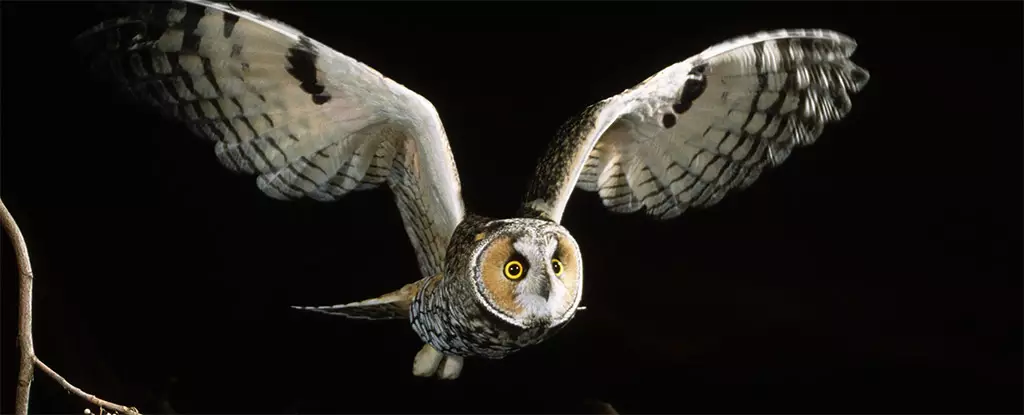The long-eared owl, or Asio otus, is not just another bird of prey; it’s a captivating emblem of nature’s exquisite design. Sporting its characteristic “horns” and a mesh of earthy tones, this raptor stands as a marvel of evolutionary adaptability and beauty. Yet, beneath its cryptic exterior lies an astonishing secret—an array of fluorescent day-glo pink feathers that defy our expectations of avian camouflage. While these owls blend seamlessly into their forested habitats during the day, new research reveals a dazzling dimension to their plumage that promises further insight into their behaviors, biology, and even communication.
Fluorescence: A Window into an Invisible World
Recent studies led by ornithologist Emily Griffith have unveiled the enigmatic role of fluorescent pigments in the feathers of long-eared owls. Conducted during a notable migration period in Michigan, these findings challenge our conventional notions of avian signaling. The pigments responsible for the vibrant pink glow are known to process ultraviolet light, effectively transforming the way these birds interact with their environment and each other. For most of us, this hidden coloration may seem innocuous; however, to the owls themselves, it could act as a vital tool for visual communication. Capturing such invisible hues offers a profound insight into the complexities of animal communication that often elude human perception.
A Dual Purpose for the Dazzling Display
What’s particularly fascinating is the potential dual functionality of these pigments. Not only do they add a visual cue in the avian social fabric, but they may also serve a practical purpose in thermoregulation. The female long-eared owls, which take on the incubation duties, exhibit a heightened concentration of fluorescent pigments compared to their male counterparts. This made me question: could this radiant coloration also be a biological adaptation to assist with heat management during incubation?
This hypothesis connects deeply with the intricate interplay between physiology and behavior in the animal kingdom. The differences in fluorescent pigmentation could be a testament to the unique challenges faced by females during nesting, a vivid reminder that evolution doesn’t operate in neat categories but rather embraces the messiness of nature.
Honest Signals in the Avian World
Griffith and her team have raised compelling questions regarding sexual selection intertwined with the functional aspects of the feather’s coloration. The notion that fluorescent pigments might constitute an ‘honest signal’ of an owl’s health rekindles debates on the nuances of mate selection in nature. Just as bright colors can indicate vitality in other species, the spectrum seen in these owls hints at a deeper connection between health, age, and reproductive potential. Young males may flaunt paler hues, subtly suggesting their relative youth and lesser experience within the competitive mating landscape.
Yet, the complexities deepen: the idea that females possess brighter feathers while still primarily interacting with males in a context of courtship is paradoxical. This variability sparks intrigue into the continuous evolution of behavioral adaptations among the species. What mechanisms govern the selection pressures that lead to this seemingly contrasting trait?
The Broader Implications of Fluorescent Communication
The implications of these findings stretch beyond mere aesthetics; they open a fascinating dialogue around animal behavior and the environment that shapes it. In an era of climate change and habitat degradation, understanding these connections becomes crucial. As brightness dwindles in the face of environmental challenges, what will become of the long-eared owl’s signaling system? Will the nuances of their communication survive the pressures of a changing world, or will they be rendered ineffective in the quest for survival and reproduction?
As we delve into this complex tapestry of nature, what becomes abundantly clear is that life is seldom black and white—much like the fluorescent markings of the long-eared owl. Each discovery not only enhances our appreciation for these magnificent creatures but also underscores our responsibility to protect the delicate ecosystems that foster such wonders. In a world increasingly driven by the visible, it might be time for us to recognize and value the beautifully hidden aspects of life that contribute to its richness.


Leave a Reply